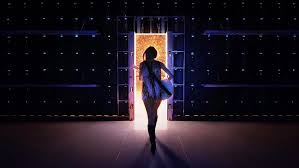Uprising 2024 Movie Review
In Kim Sang-Man’s film Uprising, a highborn boy, Jong-ryeo, living during the Middle Joseon era in Korea, watches as a slave his age, Cheon-young, feasts on scraps. The boys grow up and become men, the former promising the latter his freedom.
Park Chan-wook co-writes a film where the highborns promise freedom to their lowborn slaves, and it’s easier to dangle that promise as Japan invades Korea during the 1500s. That’s why an adult Cheon-young (Gang Dong-won) repeatedly fights Samurai Kenshin (Jung Sung-il).
While Cheon-young joins a militia, adult Jong-ryeo (Cha Seung-won) gets a cushy military post, which means he gets close to Seonjo (Cha Seung-won), an ineffective king during wartime. Cheon-young’s militia has more success in defeating the Japanese and traitors against Korea.
Cheon-young also get new friends through the militia like female warrior Beom-dong (Kim Shin-rock). Another is Kim Ja-Ryeong (Jin Sun-kyu), a general adhering to Confucian virtues. But Jong-ryeo returns to his life, angry because of what he thinks Cheon-young does.
Cheon-young and Jong-ryeo are mad at each other, sentiments that they should direct elsewhere. That’s because King Seonjo Koreanizes Kenshin, thinking that the latter can effectively wipe out traitors. Jong-ryeo has plans against Kenshin but will Cheon-yeoung be a friend or a foe?
Characters make films like Uprising, which is probably also true in real life, and depicting controversial history like 1590s Korea needs people whom history books leave out. Credit is due tho this film’s choice to focus on unsung folk heroes.
We mostly know history for kings and armies and their respective big moves, but Uprising‘s personal approach feels competent – viewers have Park’s screenplay to thank for that. Sometimes, history is about two friends duking it out, airing their misunderstandings through fights.
Uprising also fits well within Park’s screenplays that study what divides his characters. Cheon-young and Jong-ryeo are his two protagonists, Kenshinthen becoming their antagonistic third wheel. Half the time, Kenshin is cool, but at other times though, his scenes feel bloated.
It’s understandable that Kim Sang-man has to cover a lot of ground in Uprising, and credit is due for him as he depicts battles in natural settings. Sometimes, though, it feels like his approach leads to visuals that are half glossy.
I say half because the film’s final battle scene takes place within a fog. Sure, that’s naturalism for you, but I’d like a little control to see things clearer. But when the fog settles, the action is good enough which saves the film.




